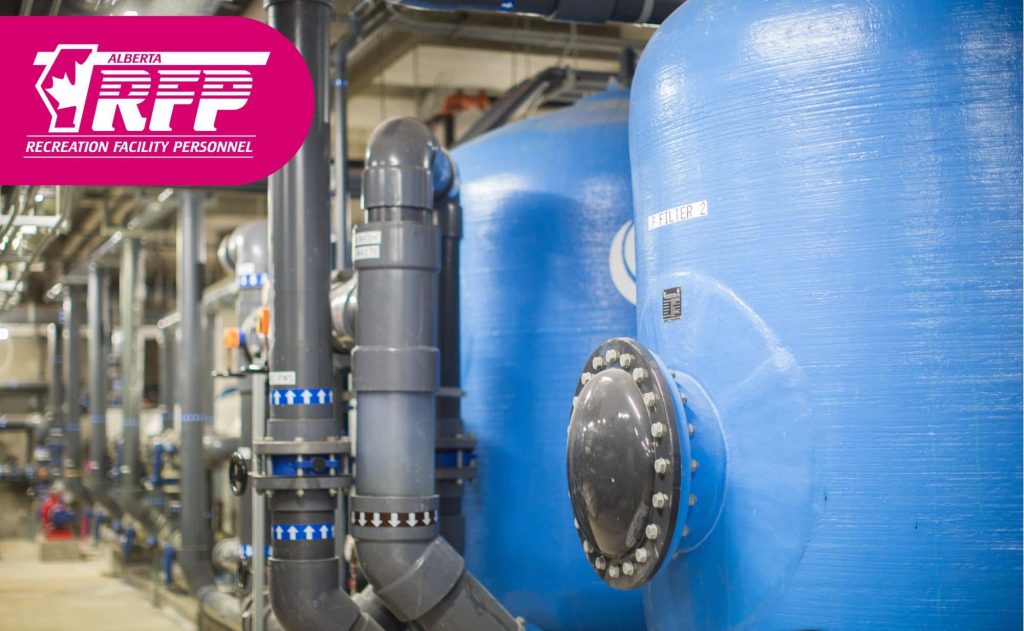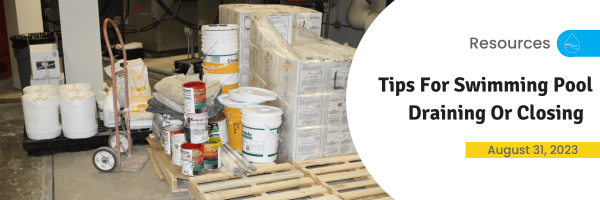Here Are Some Helpful Tips To Help When Closing A Pool For Shut Down Or For The Season

Pool shutdown is an essential aspect of the annual preventative maintenance cycle. This will keep your pool healthy, functional and it will reduce the maintenance services that are required throughout the year.
Swimming pool operators should maintain a “Shutdown Log” in which they record what is done to prepare for the shut-down, during the drain and follow-up after the pool is closed. The Shutdown Log would include procedures, actions, chemicals, problems with solutions, timing and the names of the people involved in the process. This log can be a valuable resource for the next time the pool is drained.
Before The Pool Is Drained
Before draining the swimming pool, the following agencies should be alerted:
- Water Treatment Plant – inform them that the swimming pool water will be entering the sewer system or “re-use” the swimming pool water. Swimming pool water has been used for watering boulevards, flowerbeds, trees, sport fields and other areas surrounding the swimming pool. Street cleaning equipment, roadway maintenance and water hauling companies can also use swimming pool water that would normally be drained to waste.
- Local Fire Department – advise them that the pool is being drained. There is a possibility that the large amount of water may flood the sewer system and cause back-ups. The fire department may be asked to respond.
- Community Administrative Office – who will then advise the Health Inspector and other administrative officials that the swimming pool is being drained.
The following should be done in the days leading up to the scheduled drain or close date:
- Secure the necessary equipment to completely drain the swimming pool. For example, portable pumps may be necessary to drain water from the deepest portion of the swimming pool. If water is left in the swimming pool to counter the effects of the water table. It may be necessary to secure logs or timbers that would minimize damage to the pool surfaces.
- Secure barriers to install around the perimeter of the swimming pool basin.
The Day Of The Pool Draining
There is no one standard procedure for draining a swimming pool. Operators will find it necessary to adapt this general process to accommodate the specific design characteristics of their facility. It is important that operators have a definite and documented procedure for draining a pool.
The following steps should be followed on the day of the draining:
- Shut down the operating system including the filters, chemical feed systems, equipment, and controllers.
- Filters should be backwashed and drained.
- Store all equipment in a manner consistent with manufacturer’s recommendations.
- Drain the swimming pool.
- Erect barriers around the perimeter of the swimming pool to prevent staff or workers from accidentally falling into the swimming pool basin.
- If it is an outdoor pool, catalogue all supplies and equipment before storing them away for the winter.
- Ensure that all procedures are followed for appropriate lock-up and vandalism prevention during the closed period.
- Once the swimming pool is empty, remove equipment and fixtures that could be damaged while the swimming pool is empty.
NOTES ABOUT OUTDOOR POOLS
Here are some additional points to keep in mind when draining an outdoor pool.
Shutting your outdoor pool down for the winter:
- Clean, drain filters and filter tanks
- Blow out swimming pool piping
- Cover access points such as windows, doors
- Ensure that barriers are in place
- Store all equipment appropriately

